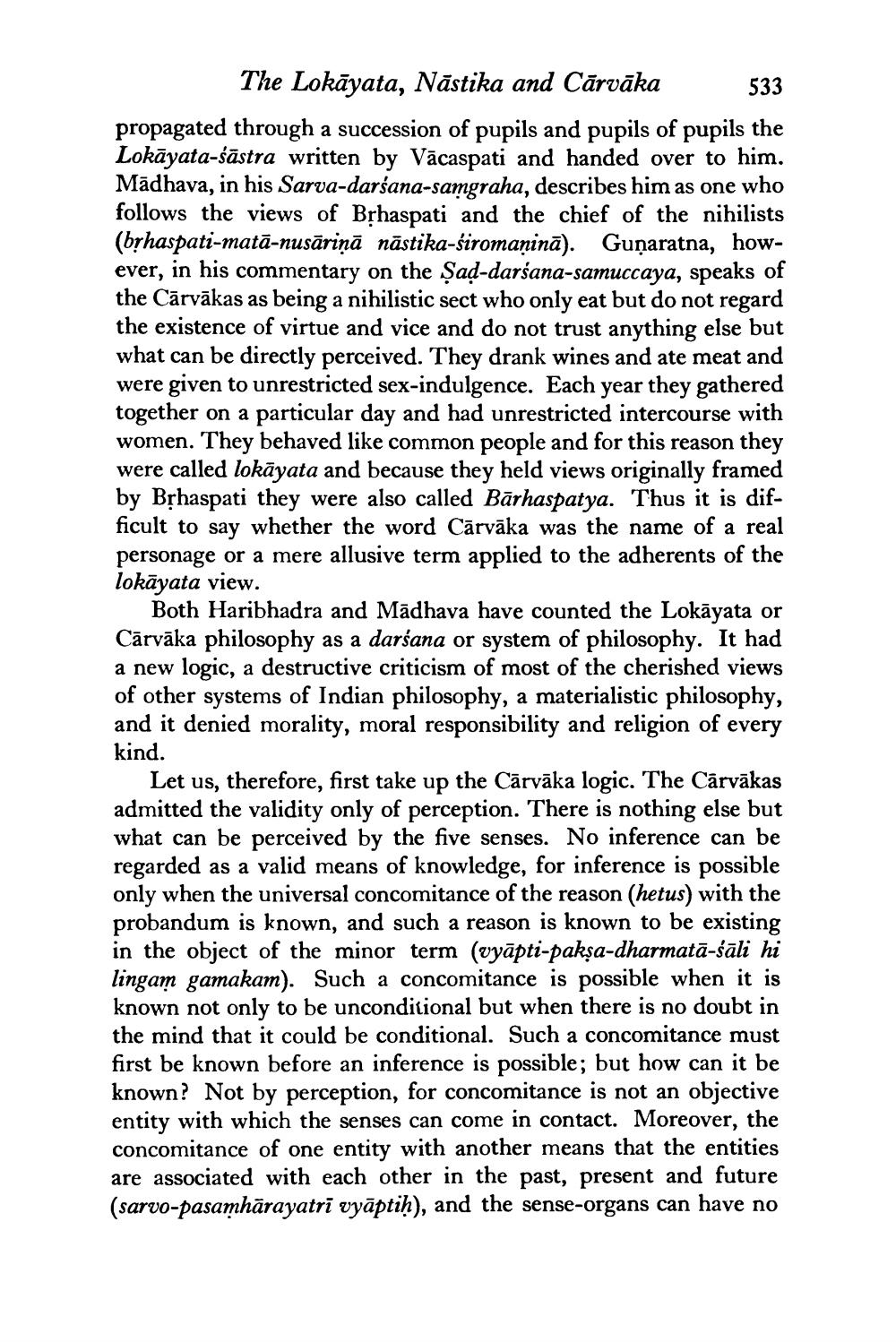________________
The Lokayata, Nāstika and Cārvāka
533
propagated through a succession of pupils and pupils of pupils the Lokāyata-śāstra written by Vacaspati and handed over to him. Madhava, in his Sarva-darśana-samgraha, describes him as one who follows the views of Bṛhaspati and the chief of the nihilists (bṛhaspati-matā-nusāriņā nāstika-siromanina). Gunaratna, however, in his commentary on the Sad-darśana-samuccaya, speaks of the Cārvākas as being a nihilistic sect who only eat but do not regard the existence of virtue and vice and do not trust anything else but what can be directly perceived. They drank wines and ate meat and were given to unrestricted sex-indulgence. Each year they gathered together on a particular day and had unrestricted intercourse with women. They behaved like common people and for this reason they were called lokāyata and because they held views originally framed by Bṛhaspati they were also called Bārhaspatya. Thus it is difficult to say whether the word Cārvāka was the name of a real personage or a mere allusive term applied to the adherents of the lokayata view.
Both Haribhadra and Madhava have counted the Lokayata or Cārvāka philosophy as a darśana or system of philosophy. It had a new logic, a destructive criticism of most of the cherished views of other systems of Indian philosophy, a materialistic philosophy, and it denied morality, moral responsibility and religion of every kind.
Let us, therefore, first take up the Cārvāka logic. The Carvākas admitted the validity only of perception. There is nothing else but what can be perceived by the five senses. No inference can be regarded as a valid means of knowledge, for inference is possible only when the universal concomitance of the reason (hetus) with the probandum is known, and such a reason is known to be existing in the object of the minor term (vyāpti-pakṣa-dharmată-śāli hi lingam gamakam). Such a concomitance is possible when it is known not only to be unconditional but when there is no doubt in the mind that it could be conditional. Such a concomitance must first be known before an inference is possible; but how can it be known? Not by perception, for concomitance is not an objective entity with which the senses can come in contact. Moreover, the concomitance of one entity with another means that the entities are associated with each other in the past, present and future (sarvo-pasamhārayatri vyāptiḥ), and the sense-organs can have no




